Time to ditch your 4K TV? Scientists reveal when it makes 'no sense' paying MORE for a pricier Smart TV
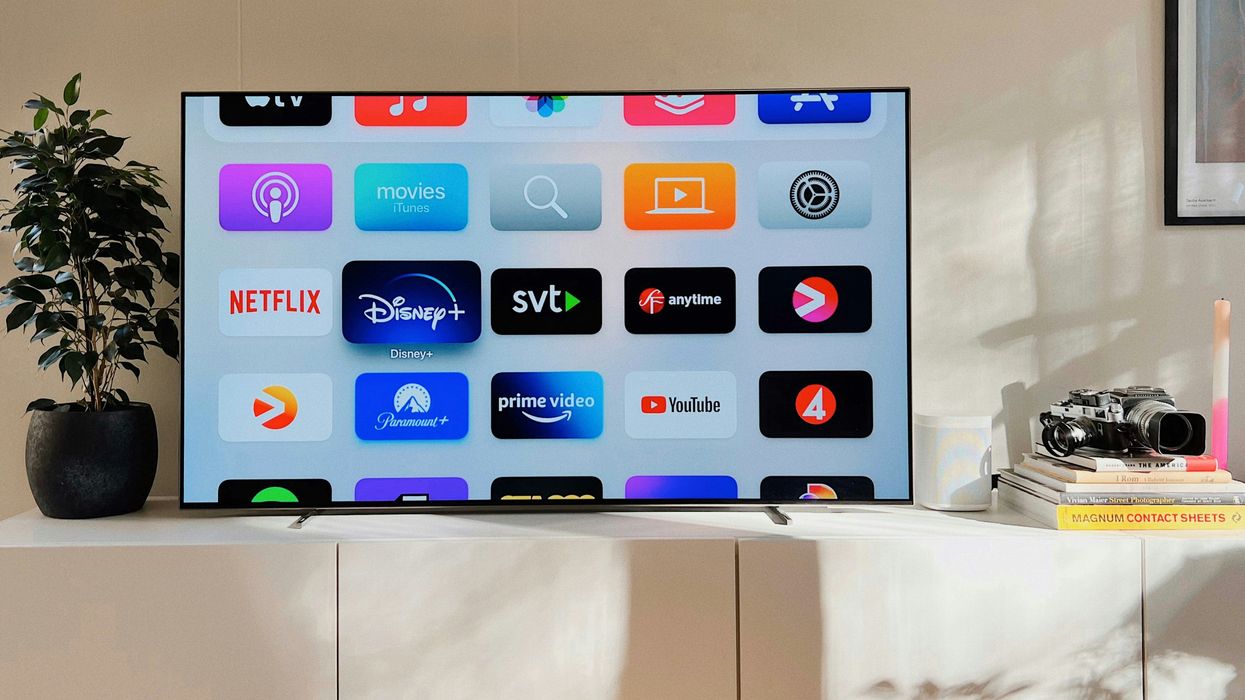
Depending on the size of your living room, it might not be worth spending the extra for a pixel-packed display on your new Smart TV
|UNSPLASH | OSCAR NORD

All products and promotions are independently selected by our experts. To help us provide free impartial advice, we will earn an affiliate commission if you buy something. Click here to learn more
It all depends on the size of your living room, Cambridge University researchers reveal
Don't Miss
Most Read
Latest
If you're thinking about an upgrade to a new television, you might be tempted to treat yourself to a 4K or 8K model, thinking that it'll offer the ultimate picture quality at home. But according to new research from Cambridge University, paying more for a 4K TV could be a colossal waste of money, depending on the size of your home.
That's because splashing out on a top-of-the-range 4K or 8K flatscreen television won't actually give you a sharper, clearer picture in most UK homes, according to scientists from Cambridge University. Much like a television or the screen you're reading this on, the human eye has a resolution limit.
The researchers, working with Meta Reality Labs, found that human eyes cannot tell the difference between the most pixel-packed displays when sitting at a normal distance from the screen.
In a typical UK living room, the sofa sits roughly 2.5 metres (8.2 feet) from the screen. According to calculations from the team at Cambridge University, published in the Nature journal today, sitting that same distance from a 44-inch 4K or 8K TV does not provide any additional benefit over a lower resolution telly of the same size.
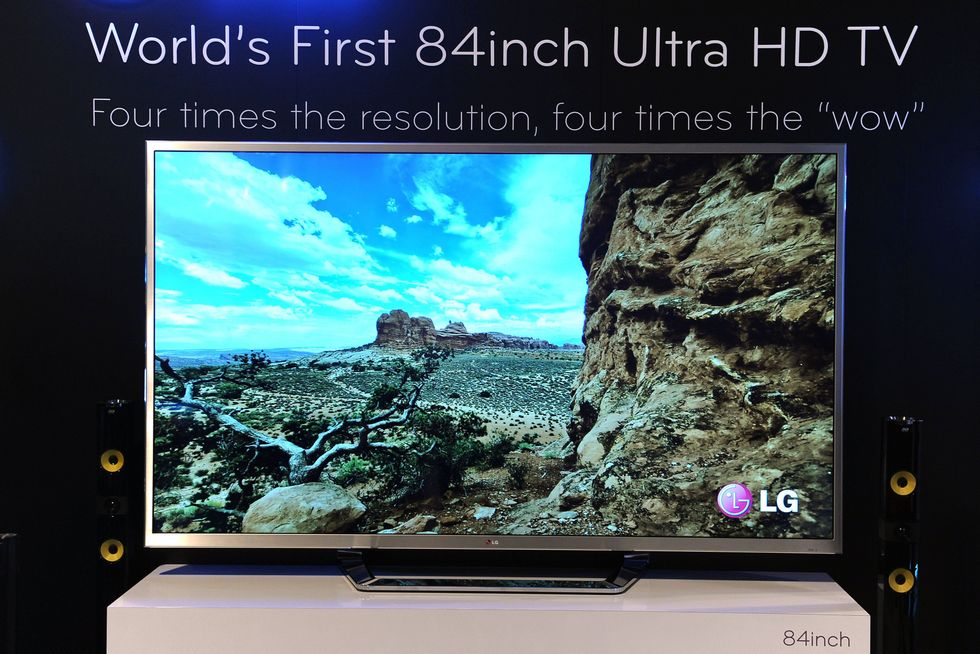
An early example of a 4K Ultra HD screen from LG at the Gadget Show Live 2013 at the NEC, Birmingham
|PRESS ASSOCIATION
Researchers developed a clever system to work out the 'maximum resolution' of the human eye. They mounted a screen on a sliding track and displayed incredibly fine patterns made up of thin lines in black and white, as well as different colours.
All the participants had to do was say whether they could spot the individual lines or not. Researchers were able to use the sliding track to move the screen closer to, or further away from the subjects.
Save £200 on the Fire TV 4K lineup from Amazon
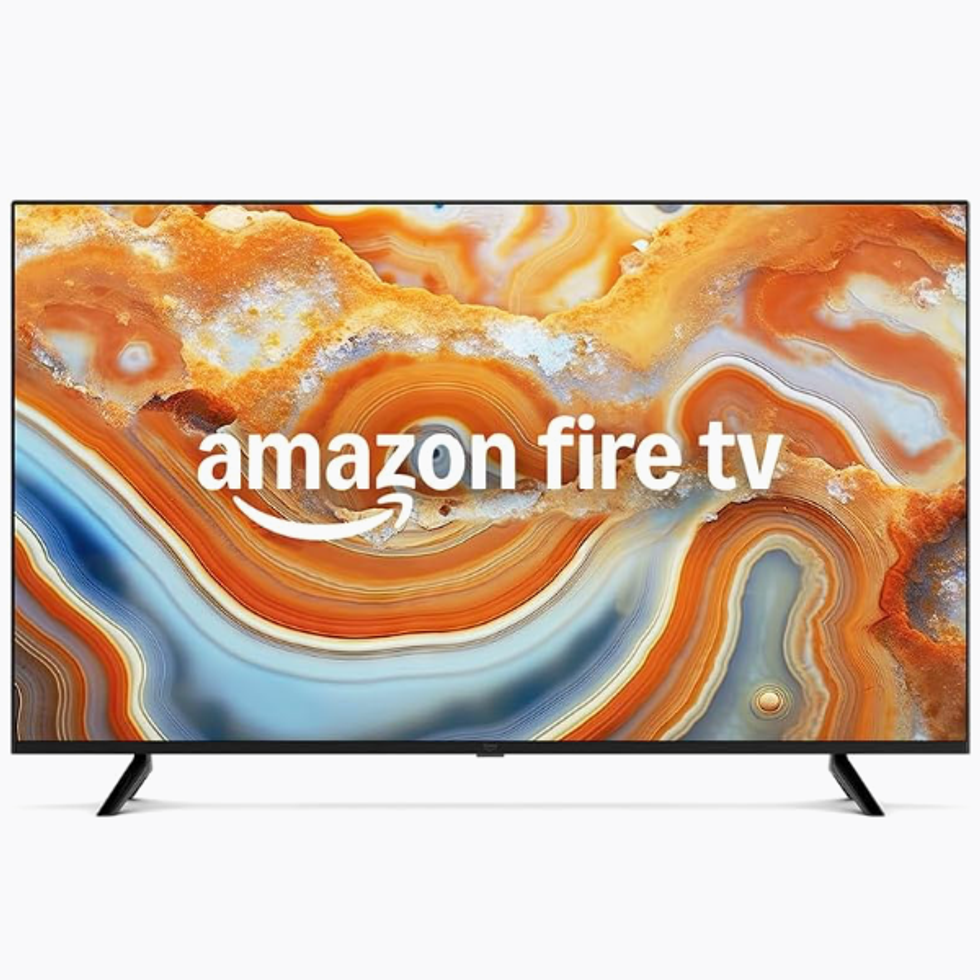
Have you run the numbers? Does it make sense to upgrade to 4K Ultra HD in your living room? With 4x as many pixels as standard 1080p HD, this Fire TV should offer a sharp picture whether you're watching free-to-air channels via Freely or on-demand content from Netflix, Prime Video, Apple TV+ and dozens of other popular streamers
Fire TV 4-Series
$499
$299
As the screen moved to different distances, the team measured the point where people's eyes could no longer make out the detail. Instead of measuring the number of pixels-per-inch in the screen, researchers focused on how much detail was perceptible on-screen at different distances.
The test showed that your eyes reach their limit well before those extra pixels make any difference.
The human eye can only detect so much detail, and beyond that point, you're essentially paying for improvements you physically cannot see. Eighteen people with normal vision took part in the study.
LATEST DEVELOPMENTS
What does this mean for your setup at home?
Well, it depends. Fortunately, the Cambridge University team aren't going to force you to do any maths. Instead, they've built an online calculator to help you work out whether a fancier screen would actually make any difference in the size of your living room.
Just pop in the rough distance that you sit from your telly, how big the screen is, and what picture quality you're looking at. And that's it! The calculator then tells you whether spending more money would actually give you a better viewing experience, or whether you'd just be wasting cash on improvements your eyes can't even see.
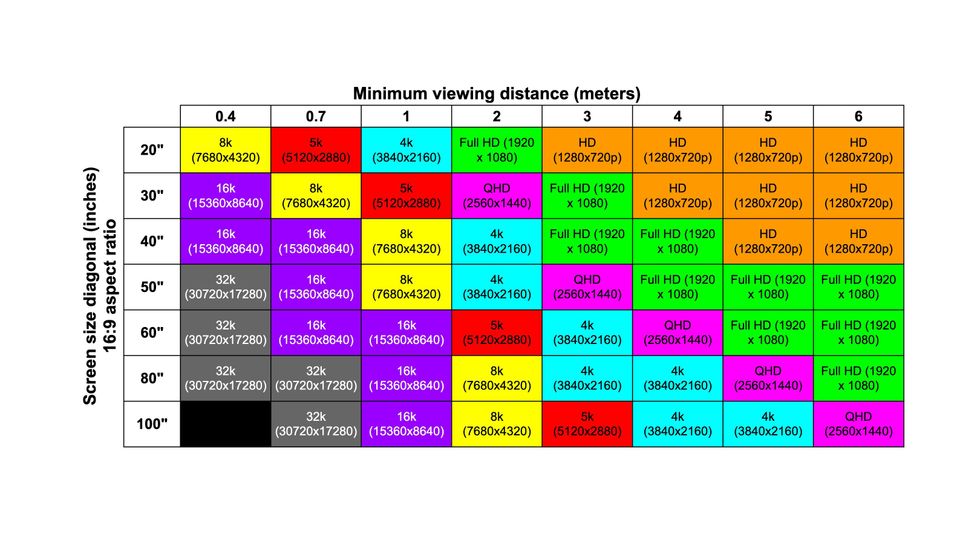
Scientists created this useful table to quickly determine if you need a 4K or 8K screen
|UNIVERSITY OF CAMBRIDGE | NATURE JOURNAL
Professor Rafał Mantiuk from Cambridge's Department of Computer Science and Technology explained the problem with manufacturers constantly pushing more pixels: "If you have more pixels in your display, it's less efficient, it costs more and it requires more processing power to drive it. So we wanted to know the point at which it makes no sense to further improve the resolution of the display."
The widely accepted 20/20 vision standard, based on the Snellen chart that will be familiar to anyone who has ever had their vision checked, suggests that the human eye can resolve detail at 60 pixels per degree, or PPD.
“This measurement has been widely accepted, but no one had actually sat down and measured it for modern displays, rather than a wall chart of letters that was first developed in the 19th century,” said Dr Maliha Ashraf, who led the study.
The researchers discovered that the eye’s resolution limit is higher than previously believed, but that there are important differences in resolution limits between colour and black-and-white. For greyscale images viewed straight on, the average was 94 PPD. For red and green patterns, the number was 89 PPD, and for yellow and violet, it was 53 PPD.
“Our brain doesn’t actually have the capacity to sense details in colour very well, which is why we saw a big drop-off for colour images, especially when viewed in peripheral vision,” said Mantiuk.
"Our eyes are essentially sensors that aren’t all that great, but our brain processes that data into what it thinks we should be seeing."
The researchers modelled their results to calculate how the resolution limit varies across the population, which will help manufacturers make decisions that are relevant for the majority of the population: for example, designing a display which has retinal resolution for 95% of people rather than an average observer.
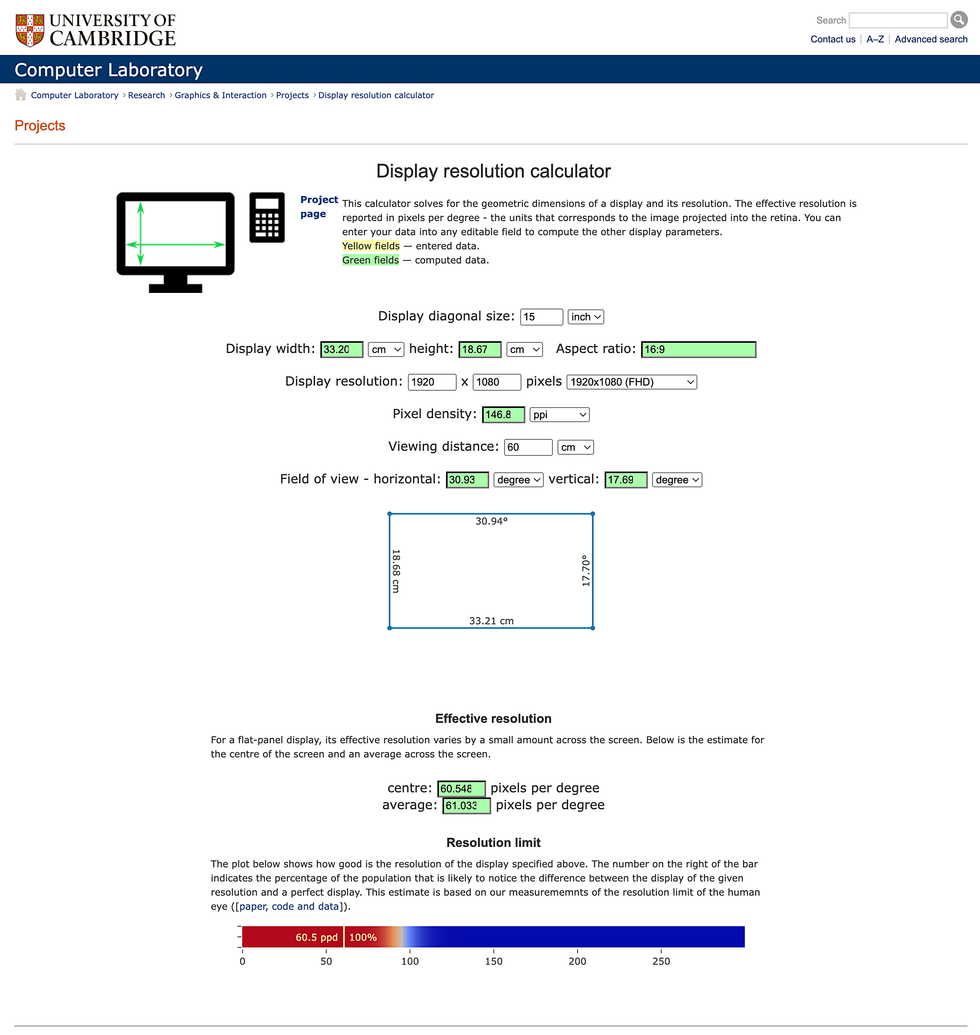
Researchers have launched a free online tool that lets you check whether the Smart TV you're eyeing up needs a pixel-packed 4K or 8K resolution for the size of your living room
|UNIVERSITY OF CAMBRIDGE | NATURE JOURNAL
Based on this modelling, the researchers developed their online calculator, which enables people to test their own screens or help inform future buying decisions.
For most British living rooms, if you sit about three metres back, you'd need a massive 60-inch screen before those extra pixels would even start to matter.
The research does have some important exceptions, though.
If you're choosing a computer monitor that you'll be sitting really close to – less than a metre away – then those higher quality screens really do make a difference. The same goes for your phone, where the screen is right up close to your face.
The findings also matter for virtual reality headsets and augmented reality displays, where the screens are literally centimetres from your eyes. Dr Alex Chapiro from Meta Reality Labs says the results will help shape how future screens, video technology and even gaming systems are developed.
More From GB News










